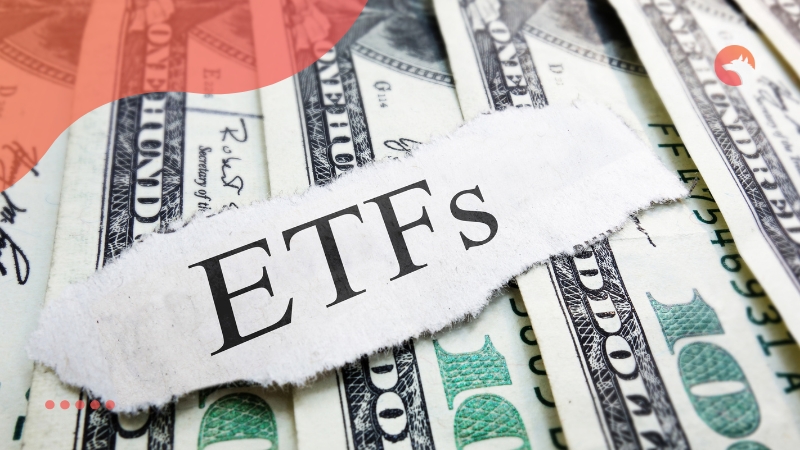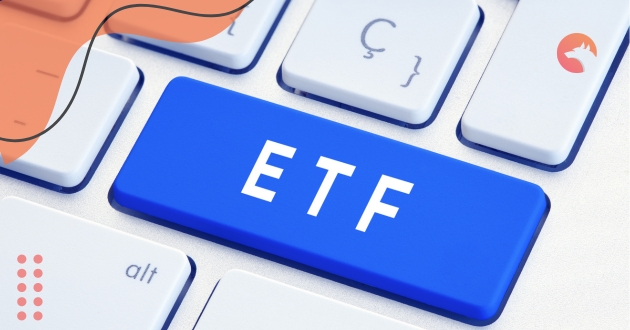How to invest in ETFs has become an increasingly popular topic for both new and experienced investors. Exchange-Traded Funds (ETFs) offer a diversified and accessible way to participate in the financial markets. For those seeking a balance between risk and reward, ETFs provide an efficient and cost-effective option.
How to invest in ETFs can be straightforward, but it requires some foundational knowledge of how these funds operate. ETFs combine the best features of mutual funds and individual stocks, offering flexibility and diversification. Unlike traditional stock investments.
Many people wonder how to invest in ETFs without taking on excessive risk. The answer lies in research, understanding market trends, and choosing funds that align with one’s financial goals. Whether you are interested in growth, income, or a mix of both, ETFs provide an array of options that cater to various investment strategies.
What are ETFs?

Exchange-Traded Funds (ETFs) are financial products that track a specific index, commodity, sector, or asset class. They allow investors to gain exposure to a broad range of assets with a single purchase, making them ideal for building a diversified portfolio.
Unlike mutual funds, ETFs trade on an exchange just like stocks, which means they offer liquidity and flexibility in trading.
Advantages of Investing in ETFs
1. Diversification
One of the key advantages of ETFs is their ability to provide diversification. By investing in a single ETF, you can gain exposure to multiple assets, reducing the risk associated with investing in individual stocks. Diversification is a fundamental strategy for mitigating risk and achieving long-term growth.
2. Low Costs
ETFs are generally considered a cost-effective investment option. Their expense ratios tend to be lower compared to mutual funds, which makes them an attractive choice for investors who want to maximize their returns by minimizing fees. Moreover, since ETFs are passively managed, they typically incur fewer management costs.
How to Start Investing in ETFs
1. Determine Your Investment Goals
Before investing in ETFs, it’s important to understand your financial goals. Are you looking for income, capital appreciation, or a combination of both? Knowing your objectives will help you select the right types of ETFs that align with your risk tolerance and time horizon.
2. Choose the Right ETF Type
There are various types of ETFs to choose from, such as equity ETFs, bond ETFs, sector-specific ETFs, and commodity ETFs. Each type has its unique characteristics, and understanding these will allow you to make an informed decision. For example, equity ETFs track stocks, while bond ETFs focus on fixed-income securities.
Key Considerations When Investing in ETFs
1. Liquidity and Trading Flexibility
ETFs offer the flexibility to buy and sell shares throughout the trading day, unlike mutual funds, which are typically priced only once per day. This liquidity makes ETFs a suitable choice for investors who want to take advantage of short-term price movements.
2. Tax Efficiency (How to invest in ETFs)
ETFs are also known for their tax efficiency. Because they are often passively managed and have a unique structure for creating and redeeming shares, investors may experience fewer taxable events compared to actively managed mutual funds. This makes ETFs an appealing option for those looking to invest in a tax-efficient manner.
Related Investment Options
If you are considering how to invest in ETFs, you might also want to explore other investment vehicles like 401(k) plans. Learning how to invest in a 401k can be an excellent complement to your ETF investments, as both strategies can contribute to building a well-rounded retirement portfolio.
Additionally, platforms like Ally provide accessible tools and resources for managing your investments, making it easier to get started with ETFs and other financial products.
FAQ: Frequently Asked Questions About How to Invest in ETFs
1. What is an ETF and how does it work?
An ETF, or Exchange-Traded Fund, is a type of investment fund that holds a collection of assets such as stocks, bonds, or commodities. ETFs are traded on stock exchanges, similar to individual stocks, allowing investors to buy and sell shares throughout the trading day.
2. How do I start investing in ETFs?
To start investing in ETFs, you need a brokerage account. Once you have set up your account, determine your investment goals, choose the right type of ETF that fits those goals, and place an order to buy shares through your brokerage.
3. What are the benefits of investing in ETFs?
ETFs offer several benefits, including diversification, cost-efficiency, and liquidity. They provide exposure to a wide range of assets, typically have lower fees compared to mutual funds, and can be bought and sold easily during market hours.
4. Are ETFs suitable for beginners?
Yes, ETFs are suitable for beginners because they offer diversification and are generally easy to understand. They allow new investors to gain exposure to different sectors or markets without needing to pick individual stocks.
5. What are the risks associated with ETFs?
Like any investment, ETFs carry risks. Market risk, sector risk, and liquidity risk are some of the factors investors should consider. It’s important to research and understand the specific ETF you’re interested in to manage these risks effectively.
6. How much money do I need to invest in ETFs?
The amount of money needed to invest in ETFs varies. Some ETFs are available for under $100 per share, and many brokerages now offer the ability to buy fractional shares, making it accessible even with a small initial investment.
7. Can I invest in ETFs for retirement?
Yes, ETFs are a great option for retirement investing. They can be held in tax-advantaged accounts such as IRAs or 401(k) plans, providing diversification and potentially reducing overall risk while growing your retirement savings.
Conclusion: How to invest in ETFs
In conclusion, learning how to invest in ETFs can be a valuable step towards achieving your financial goals, whether you’re a beginner or an experienced investor. ETFs offer numerous advantages, such as diversification, cost-efficiency, and liquidity, making them an attractive option for building a balanced investment portfolio.
Moreover, the flexibility and tax efficiency of ETFs make them a practical choice for both short-term and long-term investments. With the availability of various ETF types, investors have the opportunity to diversify across different sectors, asset classes, and geographic regions, thus reducing overall risk and enhancing potential returns.
Finally, remember that investing in ETFs is just one piece of the larger financial puzzle. Combining ETF investments with other strategies, such as retirement plans and savings accounts, can help you build a more robust and comprehensive financial plan.



